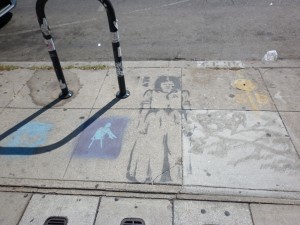The first time we passed through Tumbarumba I loved the place. It had already started snowing higher up the mountains and in Tumbarumba the cold rain tinged the main street with a romantic grey patina. Icy water flowed down the gutters and the café where we ordered soup had books to read and a log fire burning.
This time we visit on New Year’s Eve and I am reminded that the midsummer sun is a great leveller, the glare off the asphalt erasing any architectural features of distinction. The main street of Tumbarumba might belong to any country town, with its mix of verandah post and IGA Supermarket aesthetics, the Lotto posters on the newsagency window, the racks of synthetic Made-in-China clothes standing outside once-glorious retail emporia, the same flies, the same listless teenagers flicking chips at each other as they suck Cokes at plastic tables outside the take-away. The cosy café we remember is closed for the Christmas-New Year period.
What perhaps distinguishes Tumbarumba are the dead, undecorated Christmas trees strapped to every verandah post and traffic sign – an odd civic nod to the festive season. In the heat they give off the nostalgic piney smell of Christmases past.

Sunset in Tumbarumba
And the pavements? The only embellishments I find are yellow stencilled shoe prints – perhaps the remnants of some heritage trail (you can just make out a pair of them in the photograph) – and one-inch square bathroom tiles, some red, some blue, randomly and very sparsely pressed into the concrete footpath.
As we squint at this streetscape a water truck trundles by sprinkling water, not to settle the dust (recent floods here have eliminated dust), but to cool the melting asphalt. Too late for us. We are standing in the shade of the pub awning, gouging tar and stones from the soles of our Crocs, collected mid-afternoon when we stepped out of the car in a side street.
Happy New Year to all.
















